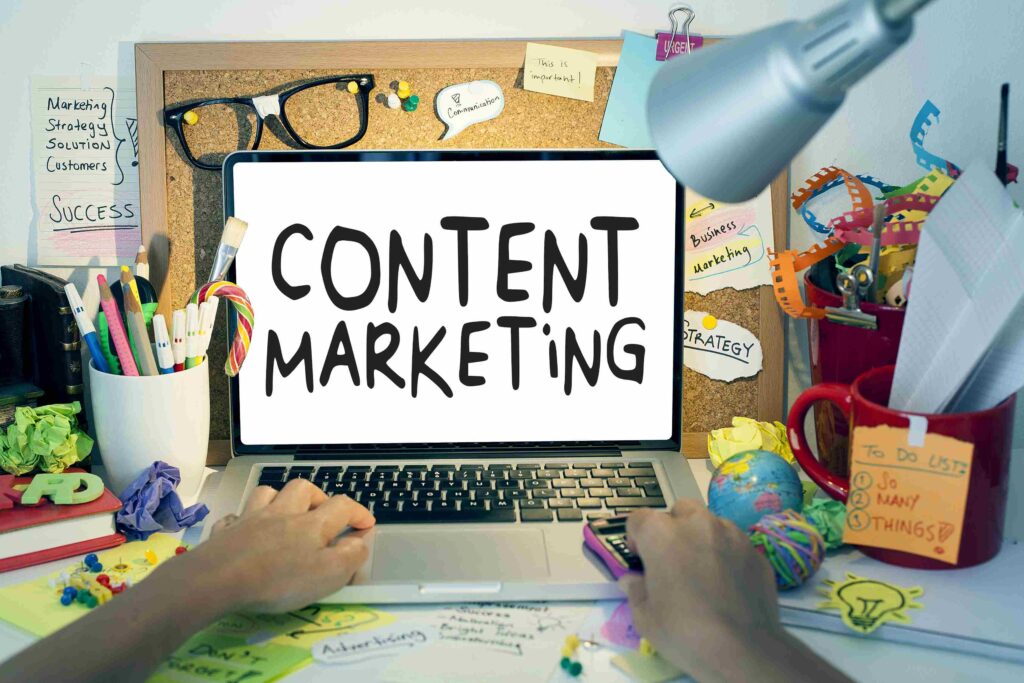Content marketing is a powerful tool for businesses to reach and engage with their target audience. But simply creating content is not enough; it’s important to create content that is tailored to each stage of the customer journey. By doing so, businesses can create a more personalized experience for their customers and increase the chances of converting them into loyal, long-term customers.
Here you can learn about the different stages of the customer journey and how content marketing can be used effectively at each stage.
Stage 1: Awareness
At this stage, the customer is becoming aware of their problem or need and is looking for information to help them understand it better. They may not be aware of your business or the solutions you offer, so the goal of your content marketing strategy should be to capture their attention and introduce them to your brand.
One effective way to do this is by creating educational content that provides valuable information and insights about your industry or niche. This can be in blog posts, videos, infographics, or social media posts. For example, if you run a fitness studio, you could create content about the benefits of regular exercise or tips for staying motivated to work out.
Another effective strategy for raising awareness is to use paid advertising to target people searching for information related to your industry or niche. Using platforms like Google Ads or social media ads, you can reach a large audience and drive traffic to your website.
Stage 2: Consideration
At this stage, the customer has identified their problem or need and is actively considering different solutions. They may be researching different brands and evaluating their options. Your goal at this stage is to provide content that helps them understand why your brand is the best choice for them.
One effective way to do this is by creating product comparison guides or in-depth reviews that compare your products or services to your competitors. This can help customers understand your brand’s unique features and benefits and make an informed decision.
Another effective strategy for the consideration stage is creating case studies or customer success stories demonstrating how your products or services have helped others solve similar problems. You can build trust and credibility with potential customers by sharing real-life examples of how your brand has made a difference.
Stage 3: Conversion
At this stage, the customer has decided to purchase and is ready to become a customer. Your goal at this stage is to provide content that makes it easy for them to complete the purchase process and become customers.
One effective way to do this is by creating product demos or tutorials that show customers how to use your products or services. This can help them feel more confident in their decision and reduce the chances of buyer’s remorse.
Another effective strategy for the conversion stage is to use retargeting ads to remind customers about products they’ve viewed or added to their cart but haven’t yet purchased. By using retargeting ads, you can keep your brand top of mind and encourage customers to complete their purchases.
Stage 4: Loyalty
At this stage, the customer has become loyal and is likely to make repeat purchases and recommend your brand to others. Your goal at this stage is to provide content that strengthens the relationship and encourages continued engagement with your brand.
One effective way to do this is by creating exclusive content or promotions for loyal customers. This can help them feel valued and appreciated and encourage them to continue supporting your brand.
Another effective strategy for the loyalty stage is to create customer advocacy programs that encourage customers to refer their friends and family to your brand. By rewarding customers for referring new business, you can increase your customer base and strengthen the loyalty of your existing customers.
Stage 5: Advocacy
At this stage, the customer has become a brand advocate and is actively promoting your brand to others. Your goal at this stage is to continue providing content that reinforces their loyalty and encourages them to continue advocating for your brand.
One effective way to do this is by featuring customer testimonials and reviews on your website and social media channels. This can help new customers understand the value and benefits of your products or services and build trust and credibility with your brand.
Another effective strategy for the advocacy stage is to create user-generated content campaigns that encourage customers to share their experiences with your brand on social media. By featuring user-generated content on your website and social media channels, you can show the authenticity and impact of your brand and build a strong community of brand advocates.
Content Marketing Is Right for All Businesses
Content marketing is a powerful tool for businesses to reach and engage with their target audience at every customer journey stage. By creating content tailored to each stage, businesses can create a more personalized experience for their customers and increase the chances of converting them into loyal, long-term customers.
By using educational content, product comparison guides, customer success stories, product demos, exclusive content and promotions, and customer advocacy programs, businesses can create a strong and loyal customer base that will continue to promote their brand and help them achieve their business goals.
At The Legal Marketing Company, our team of experienced professionals can create a content marketing strategy that will help you attract more clients and grow your legal practice.








